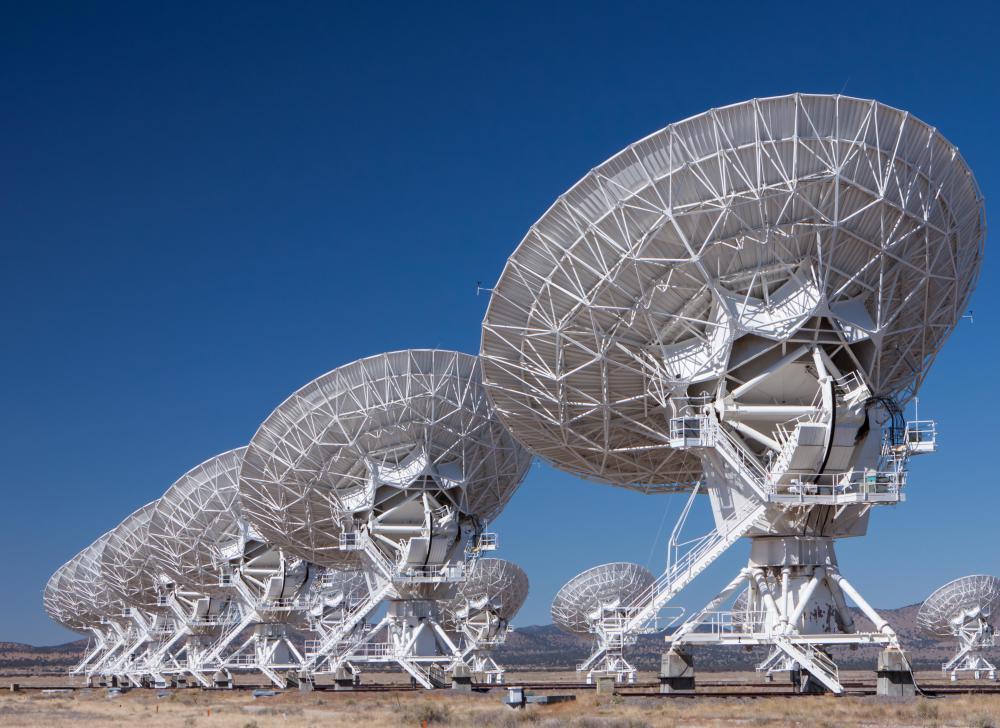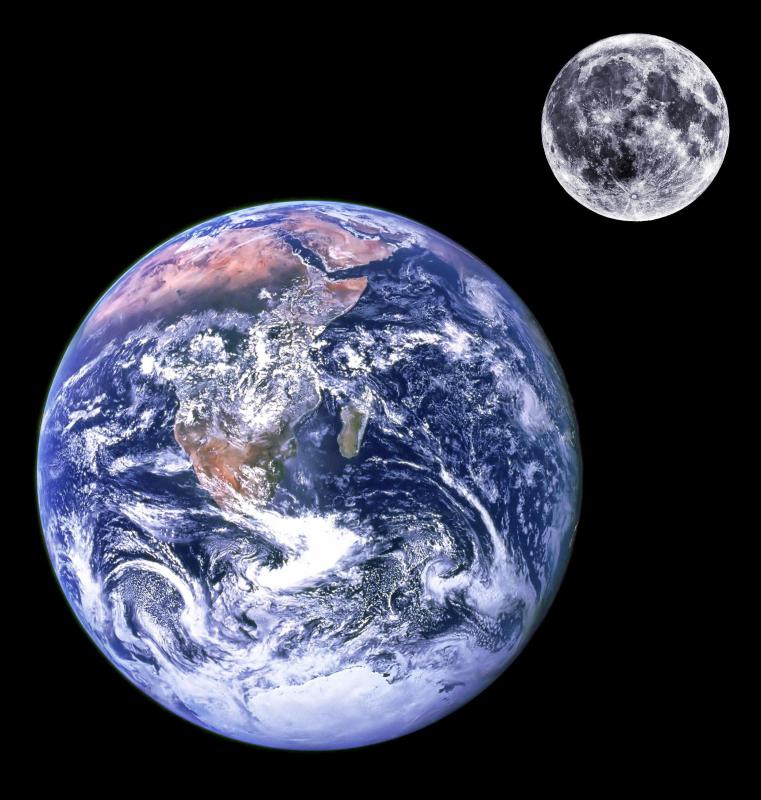At AllThingsNature, we're committed to delivering accurate, trustworthy information. Our expert-authored content is rigorously fact-checked and sourced from credible authorities. Discover how we uphold the highest standards in providing you with reliable knowledge.
What is the Dark Side of the Moon?
There are two different meanings for the phrase “the dark side of the moon,” when one is discussing astronomy rather than Pink Floyd. In the technical sense, astronomers use it to refer to the side of the moon which is not illuminated by the sun. The location of the dark side of the moon changes depending on where the moon is in its orbit. Some people mistakenly mention refer to the the far side of the moon as the dark side, the side of the moon which we never see from Earth due to a trick of the relationship between the moon and the Earth.
Several factors come together to cause the far side of the moon to face away from Earth, including the orbits of both bodies. As the moon orbits the Earth, tidal forces interact between the two to force one side of the moon to always face the Earth. The features of this side of the moon are familiar to many people on Earth, with many maps and photographs available for people who want to learn more about the details of the near side of the moon. Many people are surprised to learn that the far side of the moon is radically different from the near side, as was proved when spacecraft took photographs of it.

The far side of the moon is deeply pitted due to collisions with asteroids and meteors. Some of these pits are quite large; the South Pole-Aitken Basin, for example, is famously huge. It is believed to be the largest impact crater in the solar system. The deepest pits and craters on the moon's surface are known as maria, after the Latin word for “seas,” since early astronomers thought that the moon was covered in oceans. Since the far side of the moon never faces the Earth, some astronomers have discussed installing a radio telescope on it with the intent of studying the universe without interference from transmissions on Earth.

As the moon orbits the Earth, different parts of it are illuminated by sunlight. When the moon is between the Earth and the sun, it appears entirely dark, and as it moves, more of its surface reflects light, causing the moon to appear to grow in size until it becomes full, entirely illuminated by the sun. When the moon is full, the dark side of the moon is also the far side of the moon, but otherwise the two terms are not interchangeable. As the moon moves out of full, it wanes or dwindles in size until it becomes dark again, and the far side of the moon is the side which is totally illuminated, although we cannot see it.

The confusion between the dark side of the moon and the far side of the moon is common. Many people use the term poetically to describe extreme isolation, in which case “dark” tends to scan better than “far.” Astronomers greatly appreciate it when people use the terms correctly, since they do in fact refer to different things.
Frequently Asked Questions
What is the "dark side of the Moon"?
The "dark side of the Moon" refers to the hemisphere that is perpetually turned away from Earth due to the Moon's synchronous rotation. It's not actually darker than the near side; it receives the same amount of sunlight but remains unseen from our vantage point, leading to its mysterious moniker.
Can the dark side of the Moon be seen from Earth?
No, the dark side of the Moon cannot be seen from Earth because of a phenomenon called tidal locking. This means the Moon rotates on its axis at the same rate that it orbits Earth, keeping the same face towards us at all times.
Has the dark side of the Moon been photographed?
Yes, the dark side of the Moon has been photographed by several spacecraft. The first successful images were transmitted by the Soviet Luna 3 spacecraft in 1959. Since then, numerous missions by NASA and other space agencies have mapped it extensively.
Are there any differences between the dark side and the near side of the Moon?
Yes, there are notable differences. The dark side has a rougher terrain with more craters and fewer maria (the dark, flat plains on the Moon's surface). According to NASA, it also hosts one of the largest craters in the Solar System, the South Pole-Aitken basin.
Why is the far side of the Moon often called the "dark side"?
The far side of the Moon is often called the "dark side" not because it's devoid of sunlight but because it's unknown and unseen from Earth. This term has been popularized by culture and media, despite being a misnomer.
Has anyone ever landed on the dark side of the Moon?
Yes, the Chinese Chang'e 4 mission made history by landing on the far side of the Moon in January 2019. This was the first time a spacecraft soft-landed in this region, providing valuable scientific data about this largely unexplored area.
AS FEATURED ON:
AS FEATURED ON:













Discussion Comments
No. Te moon revolves around its axis, and one revolution takes a bit less than a month. During that month it experiences the same phenomena regarding the sun, as the earth does in a day: it rises and sets once.
The moon orbits the earth, one orbit takes (indeed) a bit less than a month.
The combination of the two movements above results in the same side of the moon visible from earth at all times. This side is sometimes dark, sometimes lit, in a pattern repeating itself each (indeed) period a bit less than a month.
does the above comment about the dark side of the moon imply that the moon does not revolve?
Post your comments